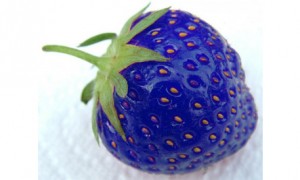“Genetically Modified” is a term that can mean a lot when it comes to plants, and I think that’s going to be an interesting issue in coming years. On the one hand, Monsanto is modifying corn to produce a pesticide, and the idea of eating that scares me (just a warning, you’re probably already eating this!). However, there are applications for GM plants that I’m more supportive of. For example, scientists are working on making plants more drought-tolerant. Considering how human-caused climate changed is predicted to alter future weather patterns, and the increasing demand for food due to a rising global population, I think GM applications like this will be necessary. They also seem to pose less risk to consumers. However, I fear that consumers will reject ALL GM foods based upon the results of some of the more scary ones, rather than open their minds to the idea that some GM foods may be OK. History has shown that it’s not a matter of using science to show whether foods are safe or not; just look at how many Americans reject the indisputable science behind climate change. This is more of an emotional and social issue, and I honestly don’t know what the answer is…but I do think this is a debate we’ll be having in coming years.
Genetically Engineered Crops
If you’re not sure what all the fuss is about genetically modified crops, you owe it to yourself to check out this quick (4 minute) video that does a great job of explaining the issue:
I’m all for improving our lives through science, but GM foods is not about that…it’s about improving corporate profits through science without scientifically examining what possible effects this has on the species affected by this technology (not just the animals that eat the crops, us, but the animals that live where these crops are grown).
Blue strawberry?
 Wow, talk about genetically modified food. A BLUE strawberry? Crazy stuff. It seems the goal wasn’t to create a blue strawberry, but rather, one that would be resistant to freezing – which this one is – and the color was just a side effect. Scientists took the gene that makes a type of antifreeze in flounder fish, and added it to an otherwise normal strawberry planet. This abomination is the result. This GMO field is one that really scares me…I recognize we may require widespread adoption of GMO in order to feed growing populations, but I’m concerned about the unknown side effects of creating living organisms like these.
Wow, talk about genetically modified food. A BLUE strawberry? Crazy stuff. It seems the goal wasn’t to create a blue strawberry, but rather, one that would be resistant to freezing – which this one is – and the color was just a side effect. Scientists took the gene that makes a type of antifreeze in flounder fish, and added it to an otherwise normal strawberry planet. This abomination is the result. This GMO field is one that really scares me…I recognize we may require widespread adoption of GMO in order to feed growing populations, but I’m concerned about the unknown side effects of creating living organisms like these.
Read more over at Care2.
Walmart to sell genetically modified corn
 The ingredients in processed foods are already a bit of a mystery, but what about that fresh produce you’re buying? Most people assume it’s natural and safe for consumption. Well, apart from the pesticide concern (like bud nip), there’s a growing concern that the produce you buy may be genetically modified (a GMO, Genetically Modified Organism). Why should you care? Because this is being driven by corporate greed, not science. The health concerns have not been adequately addressed by science, but this ‘food’ is put up for sale anyway without its true nature being labeled.
The ingredients in processed foods are already a bit of a mystery, but what about that fresh produce you’re buying? Most people assume it’s natural and safe for consumption. Well, apart from the pesticide concern (like bud nip), there’s a growing concern that the produce you buy may be genetically modified (a GMO, Genetically Modified Organism). Why should you care? Because this is being driven by corporate greed, not science. The health concerns have not been adequately addressed by science, but this ‘food’ is put up for sale anyway without its true nature being labeled.
This summer, Walmart plans to sell genetically engineered corn on the cob in the fresh produce section. This engineered corn from Monsanto produces Bt toxin, a pesticide. Feed this stuff to rats and they get organ failure. Which somehow means it’s safe for people I guess?
So, if you care about this stuff, what can you do? First, shop at a store that cares, like Trader Joes or Whole Foods. Second, ask the produce manager in your local grocery store which items they have for sale are genetically modified (don’t expect them to know, but the point here is to raise consciousness and let them know their customers care about this issue). Third, sign this petition to send a signal to Walmart. Oh, and fourth…plant a garden and grow as much of your own food as possible, to at least minimize the scientific anomalies you introduce to your digestive tract.

